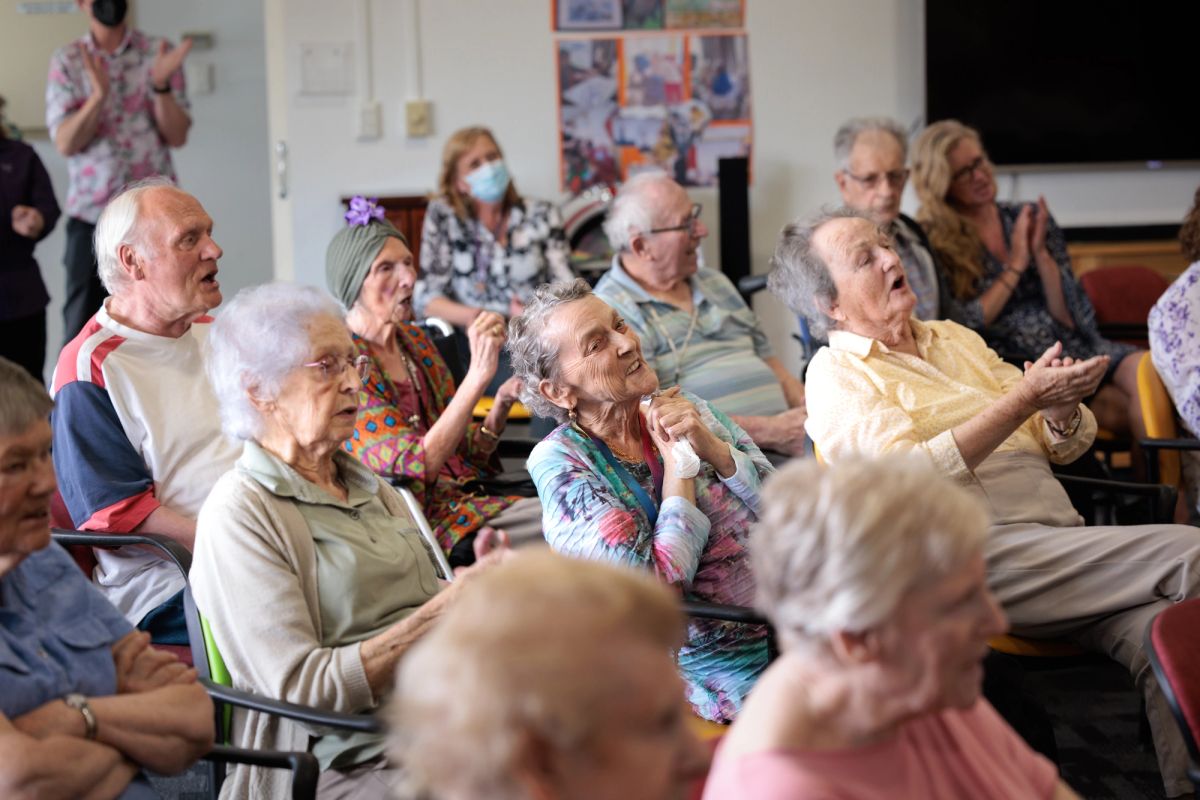Impact
We make our art to make a difference, working as artistic and social change agents.
As part of our mission to make lives better and bring people together, we create transformative programs and art for the people in our community who need it most - from residents in aged care, to kids in regional and remote schools, to families in emergency accommodation, and young people speaking out about hard topics.
We are responsible environmental stewards, changing our touring and making practices, maintaining certified carbon auditing and reduction targets, and sharing our learnings as we go.
Our guiding principles: Make lives better, create connection, shift realities
- Collaborate and advocate to address social problems
- Prioritise trauma-informed program design
- Adopt evolving best practices in sustainable design and touring
- Reduce carbon emissions by 50% by 2028
- Maintain Climate Active certification
- Be an agent for change - sharing learnings and case studies


Sustainable making
We are moving beyond the traditional design process to support more sustainable making from the get go.
Sustainable procurement and making processes, and an emphasis on salvaged materials, support our targets. Everyone gets involved in the design process earlier than before and project teams agree on targets to which they hold themselves accountable. No harsh judgements if we miss the mark though - we are learning on the fly and generous about sharing our knowledge in our sector and beyond.
At Terrapin, this process is starting to include things like a green book meeting at the start of a project build phase, to identify challenges around sustainable making practices and brainstorm solutions. We’re doing a lot of strategic hoarding: haunting tip shops and op shops to gather materials that might be useful down the track. We’re also building a bank of knowledge around material properties, usage, local waste streams we can intercept, and low-toxicity alternatives to common making items.

Touring model
To meet our carbon reduction targets we need to change how we tour - no mean feat as a company built on touring (it’s even in the name).
Currently, we’re exploring how major international theatre work Goldfish can be presented without a set - meaning no freight. Set items are sourced, used and redistributed in the place we perform, working with local charities like Foodbank or SES Tasmania to identify items that will be most valuable. Anything specific to the performance will be built to travel in checked luggage.
We are also examining opportunities for slow touring, spending longer at each tour stop to provide workshops or school performances alongside a theatre season, delivering deeper community engagement for the same carbon emissions. We’ll be trialing this in 2025 with our Australian tour of The Paper Escaper. All our Tasmanian touring (more than five months of it each year) is done in a van: we’ve got an electrified fleet in our sights once there’s a suitable van on the market.

Climate action
We are committed to responsible environmental stewardship and changemaking in our sector.
The time for awareness-raising and discussion about climate action is past: our role is to contribute. Certified from 2022 as carbon neutral through Climate Active, we’ve got ambitious carbon reduction targets of 50% by 2028. We’re focused on sustainable design, procurement and making practices, and experimentation and modelling around significant changes to the standard touring model. This puts carbon reduction at the centre of our sustainability plan, rather than relying on offsets.
The next steps, along with pursuing our emissions reduction plan, will include moving beyond the carbon offset model on the international market to hyper-local abatement. We’re for tree canopies and kelp reforestation, local solutions that have a long-term impact.
Further reading
Rigorous project evaluation, both internal and with collaborating partners, helps us to determine the impact of our work and improve it for the future. Evaluation reports include:
- Climate Active certification, 2024
- Exploring Puppetry in Aged Care Settings, 2023 - University of Tasmania
- Impact Evaluation of Terrapin’s School Touring Program, 2022 - Patternmakers
Social impact
Our stories connect with all kinds of people.
People living in aged care and people going to school. People finding inspiration at high-art festivals and people finding their feet in new communities. Responsive community service leads us to new collaborators and audiences as we look to make change, transforming realities to make lives better in Tasmania and beyond. Signature programs include: